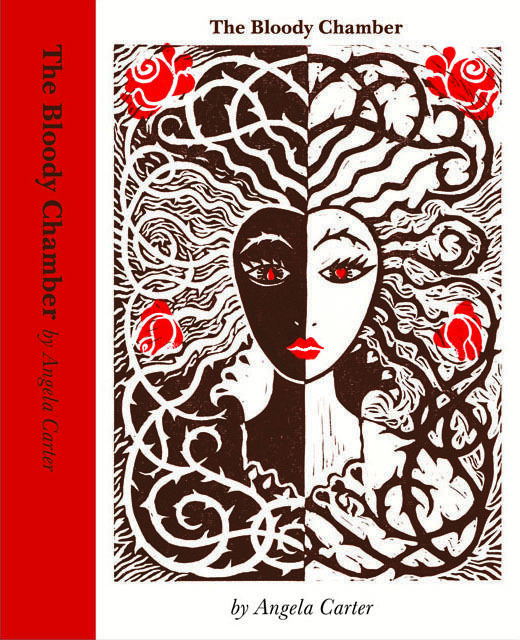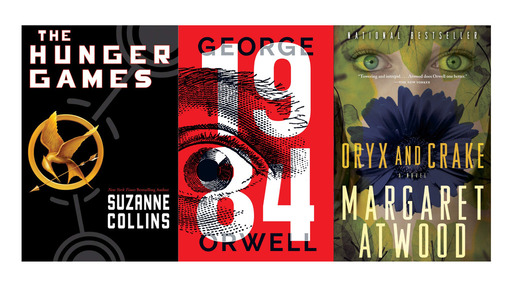Blog – Posted on Thursday, Jun 04
A Guide to Gothic Literature: The Top 10 Books You Have to Read

Haunted houses, dark romances, shadowy corridors, windswept moors… Gothic literature has everything you could ever want in a tale of terror. Its tales shock you out of your everyday experiences — but they’re so uncannily enthralling you may well wish to remain in their realms of fright forever.
Here’s our guide to the gloomiest and most brooding of genres. Read on as we trace the history of Gothic literature and introduce ten essential reads that have haunted us for centuries.
What is Gothic literature?
Emerging in Europe in the 18th century, Gothic literature grew out of the Romantic literary movement. It’s a genre that places strong emphasis on intense emotion, pairing terror with pleasure, death with romance. The Gothic is characterized by its darkly picturesque scenery and its eerie stories of the macabre. It draws its name and aesthetic inspiration from the Gothic architectural style of the Middle Ages — crumbling castles, isolated aristocratic estates, and spaces of decrepitude are familiar settings within the genre.
Gothic fiction is rooted in blending the old with the new. As such, it often takes place during moments of historical transition, from the end of the medieval era to the beginnings of industrialization. Contemporary technology and science are set alongside ancient backdrops, and this strange pairing helps create the pervasive sense of uncanniness and estrangement that the Gothic is known for. Past and present fold in on each other — even as man’s technological advancements seem to make him increasingly powerful, history continues to haunt.
Elements of Gothic Literature
The Gothic is a genre of spiritual uncertainty: it creates encounters with the sublime and constantly explores events beyond explanation. Whether they feature supernatural phenomena or focus on the psychological torment of the protagonists, Gothic works terrify by showing readers the evils that inhabit our world.
Characters
Characters in Gothic fiction often find themselves in unfamiliar places, as they — and the readers — leave the safe world they knew behind. Ghosts are right at home in the genre, where they’re used to explore themes of entrapment and isolation, while omens, curses, and superstitions add a further air of mystery.
Atmosphere
The atmosphere of eeriness is as important as the scariness of the events themselves. In a Gothic novel, the sky seems perpetually dark and stormy, the air filled with an unshakable chill.
Themes
In addition to exploring spooky spaces, Gothic literature ventures into the dark recesses of the mind: the genre frequently confronts existential themes of madness, morality, and man pitted against God or nature. Physical and mental ruin go hand in hand — as the ancient settings decay so do the characters’ grips on reality.
If you're feeling overwhelmed by the number of great horror books out there, you can also take our 30-second quiz below to narrow it down quickly and get a personalized horror book recommendation 😉
📚
Which horror book should you read next?
Discover the perfect horror book for you. Takes 30 seconds!
10 Essential Reads of Gothic Literature
While the term “Gothic” instantly conjures plenty of ghosts and images of dark despair, the genre isn’t all about terror. Let’s look at what makes it so compelling by tracing its history through ten of the most haunting and heart-wrenching works that shaped the genre.
1. The Castle of Otranto by Horace Walpole (1764)![]()
Some sources say that the Gothic truly began with The Castle of Otranto, an 18th-century melodrama by the English writer and politician Horace Walpole. Walpole had a fascination with medieval history, even building the imitation Gothic castle Strawberry Hill House in 1749. This supernatural story is framed as a rediscovered text, an antique relic from the Italian medieval period.
Set in the castle of the lord Manfred, the book opens on the wedding day of his frail son Conrad to the beautiful Isabella. Yet domestic bliss is not in the cards: Conrad meets an untimely end when he is crushed by a fallen helmet. His fate seems proof of the fact that an ancient prophecy, foretelling the tragic demise of the castle’s inhabitants, is starting to be fulfilled.
Filled with locked towers and secret passages, damsels in distress and knights in armor, The Castle of Otranto is a chilling read that introduces countless Gothic tropes that would eventually come to epitomize the genre.
“But alas! my Lord, what is blood! What is nobility! We are all reptiles, miserable, sinful creatures. It is piety alone that can distinguish us from the dust whence we sprung, and whither we must return.”
2. Frankenstein by Mary Shelley (1818) ![]()
The story of Frankenstein has haunted our collective imagination since its conception by Mary Shelley on one dark night. It’s a classic tale of man’s folly in the pursuit of dangerous knowledge: scientist Victor Frankenstein tries to play God by bringing life to reanimated corpses, but he is unable to confront the sight of the terrible thing he has created.
Considered by many to be among the best books of all time, Frankenstein is also one of the pioneering works in the science fiction genre. Yet it has plenty of classic Gothic tropes, too: mystery, doomed romance, and supernatural energy lurk in every recess of the text.
In the end, what makes Frankenstein so compelling is the unexpected humanity of the grotesque creature. Unlike the groaning monster of cinematic representations, the creature in the novel is highly intelligent and tormented by spiritual anguish, haunted by his utter aloneness after he is cruelly rejected by his creator.
“The fallen angel becomes a malignant devil. Yet even that enemy of God and man had friends and associates in his desolation; I am alone.”
3. The Fall of the House of Usher by Edgar Allan Poe (1839) ![]()
Edgar Allan Poe: master of mystery, poet of the macabre, and brooding Gothic icon. In his stories, Poe places his primary focus on psychological torment, turning inward from ominous Gothic atmospheres to explore the horrors of the mind.
The Fall of the House of Usher begins with the anonymous narrator’s arrival at the remote mansion owned by his friend Roderick Usher — who believes the house to be alive. Roderick is troubled by a crack in the house’s roof, and it does not take long before his sanity starts to crack too. His twin sister, meanwhile, is prone to falling into deathlike trances, and the reader also becomes entranced by the suspenseful narrative that seems destined toward death.
"I have, indeed, no abhorrence of danger, except in its absolute effect — in terror. In this unnerved — in this pitiable condition — I feel that the period will sooner or later arrive when I must abandon life and reason together, in some struggle with the grim phantasm, FEAR."
4. Jane Eyre by Charlotte Brontë (1847) ![]()
Like other Gothic novels before it, Jane Eyre makes its setting the quintessential isolated house beset by secrets. The unquiet estate of Edward Rochester, where Jane works as a governess, has it all: a strange attic, winding halls, and imprisoned terrors.
What makes Jane Eyre a beguiling development in Gothic literature is its focus on female interiority, featuring intimate first-person narration from its titular character. Jane, a young orphan brought up with few kindnesses, remains intensely hopeful; her yearning for new experiences is what leads her to take a position as a governess at Rochester’s Thornfield Hall.
Each unfolding shock is recounted with psychological intensity, and the narration explores Jane’s conflicted outlook on gender roles and class divisions in Georgian England. But even as it explores madness and moral crisis, this classic is not all about woe — Jane Eyre is also considered to be one of the most famous romance novels of all time. Jane soon develops secret feelings of love for the enigmatic Rochester, though she continues to suspect that he is concealing secrets about his past. Their melodramatic courtship tinged with tragedy nods at the romantic roots of the Gothic that remain continuously beguiling.
“I have little left in myself — I must have you. The world may laugh — may call me absurd, selfish — but it does not signify. My very soul demands you: it will be satisfied, or it will take deadly vengeance on its frame.”
5. The Strange Case of Dr. Jekyll and Mr. Hyde by Robert Louis Stevenson (1886) ![]()
Nothing encapsulates the themes of man’s psychological torment and self-destruction more vividly than Robert Louis Stevenson’s gripping novella. The Strange Case of Dr. Jekyll and Mr. Hyde is an account of a man with good and evil battling within himself as Henry Jekyll, a morally upright and well-mannered doctor, struggles against the vile urges of his alter ego Edward Hyde.
This dark duality arises from seeking answers in science: Jekyll struggled to quell his most disturbing urges for years, ultimately developing a serum to mask them that propels his transformation into the monstrous Mr. Hyde. Hyde feels no remorse for indulging in vice and violent actions, but Jekyll becomes increasingly unable to control his transformations as he is seized by the terrible desires that lurk within him.
“With every day, and from both sides of my intelligence, the moral and the intellectual, I thus drew steadily nearer to the truth, by whose partial discovery I have been doomed to such a dreadful shipwreck: that man is not truly one, but truly two.”
6. Dracula by Bram Stoker (1897) ![]()
The book that launched a thousand vampire stories, Bram Stoker’s Dracula is a haunting horror romance that gave us one of the most memorable and mesmerizing of Gothic figures. Count Dracula needs almost no introduction: his name is already synonymous with unquenchable bloodthirstiness.
The count lives in the faraway land of Transylvania in a castle that is a puzzle-box of mysteries, surrounded by an aura of unease. English solicitor Jonathan Harker arrives to help Dracula with legal proceedings... but before long, he finds himself haunted by phantom women, strange sleepwalking spells, and mysterious neck wounds that lead him to the horrifying truth about his host.
When Dracula journeys to England in search of new blood, he becomes obsessed with the beautiful Lucy Westenra and draws the ire of Abraham Van Helsing, a doctor who quickly realizes the cause of Lucy’s mysterious blood loss. This is a prime example of the Gothic trope of modernity blended with antiquity: it’s not only Van Helsing’s medical prowess, but his knowledge of folk remedies and ancient legends, that enables him to identify and cure the vampire’s curse. This tale of science and superstition is an essential book to read before you die — or become undead.
“Oh, the terrible struggle that I have had against sleep so often of late; the pain of the sleeplessness, or the pain of the fear of sleep, and with such unknown horror as it has for me! How blessed are some people, whose lives have no fears, no dreads; to whom sleep is a blessing that comes nightly, and brings nothing but sweet dreams.”
7. The Turn of the Screw by Henry James (1898) ![]()
Are the ghosts in the house real? Or are all those scratching sounds and screaming voices coming from inside your head? Henry James’s novella The Turn of the Screw proves that the greatest horror of all is this state of unknowing, not being sure of one’s grip on reality.
In this story, a young governess works in an English country house caring for Miles and Flora, the orphaned nephew and niece of her employer. Soon, she begins to notice unfamiliar figures roaming the grounds. As she starts to learn more about those who were employed at the home before her, she becomes increasingly convinced that the place is haunted — and that the children are concealing their own knowledge of the ghosts.
Through the governess’s obsession with the ghosts, the house, and her absent employer, the story touches on themes of psychological manipulation and repressed sexuality, capturing the heightened emotion behind not knowing what lurks around every corner. The novella’s brilliance lies in its lack of answers. Critics continue to be split over its interpretation: ghosts actually present, or the governess is merely unraveling? You’ll just have to read it and decide for yourself.
“No, no — there are depths, depths! The more I go over it, the more I see in it, and the more I see in it, the more I fear. I don’t know what I don’t see — what I don’t fear!”
8. Rebecca by Daphne du Maurier (1938) ![]()
This novel begins with the marriage of the unnamed American narrator to a wealthy English widower, and she is soon swept away to his beautiful mansion of Manderley on the Cornish coast. Yet because this is a Gothic romance and not a fairytale, married life for the new Mrs. de Winter is not so immediately picturesque. Her marriage is haunted by the specter of her husband’s first wife, the titular Rebecca, whose memory continues to command control over the house. The narrator battles the sinister housekeeper Mrs. Danvers and Rebecca’s phantom influence, working to uncover the secrets of her husbands’ past and the hidden truths within Manderley.
A thrilling tale of jealousy and rage, Rebecca is also a gripping story of its heroine discovering her inner strength — asserting her power within her marriage, within her household, and within the minds of readers.
“The moment of crisis had come, and I must face it. My old fears, my diffidence, my shyness, my hopeless sense of inferiority, must be conquered now and thrust aside. If I failed now I should fail forever.”
9. The Haunting of Hill House by Shirley Jackson (1959) ![]()
The Haunting of Hill House is not just another haunted house story: it is a masterpiece of surreal terror and intense doubt regarding one’s own sanity. It gathers together four strangers connected only by their tenuous ties to the house: Dr. John Montague, an investigator of the occult and paranormal; Luke Sanderson, the brash young heir to Hill House; Theodora, a free-spirited artist with psychic abilities; and Eleanor Vance, a timid young woman haunted by a poltergeist encounter from her youth.
Dr. Montague has selected them as participants in his latest research study: he hopes to find scientific evidence of the paranormal as they take up residence in the house for the summer. The scenes of actual ghostly activity are relatively few and only vaguely described — yet Jackson creates more terror through what she withholds, establishing an atmosphere of dread that leaves the reader in constant fear. It becomes clear that the true horrors lie not within the stately Hill House, but within the deepest abysses of the mind, as Eleanor is seized by a possessive power that threatens to destroy her entirely.
“Hill House, not sane, stood by itself against its hills, holding darkness within; it had stood so for eighty years and might stand for eighty more. Within, walls continued upright, bricks met neatly, floors were firm, and doors were sensibly shut; silence lay steadily against the wood and stone of Hill House, and whatever walked there, walked alone.”
10. The Bloody Chamber and Other Stories by Angela Carter (1979) ![]()
The Gothic arose from the premise of unearthing the secrets of antiquity and unleashing their terrors in the modern age. In The Bloody Chamber, Angela Carter tells age-old tales like you’ve never encountered them before. Her twisted reinventions of folk stories like “Little Red Riding Hood” or “Beauty and the Beast,” told in disquietingly descriptive prose, breathe fiery passion and sensually provocation into the shadows.
The Bloody Chamber features numerous stories of dangerous sexuality and paranormal romance, but it gives a feminist spin on what were traditionally morality tales warning women against unrestrained lust. In Carter’s hands, fairy tale protagonists become strong and sexually liberated women. Carter’s deconstruction of genre and gender makes this a must-read of the contemporary Gothic.
“They will be like shadows, they will be like wraiths, gray members of a congregation of nightmare; hark! his long wavering howl... an aria of fear made audible. The wolfsong is the sound of the rending you will suffer, in itself a murdering.”
***
Can’t get enough of the Gothic? Check out our guide to Southern Gothic for even more dark must-reads to keep you up at night!













